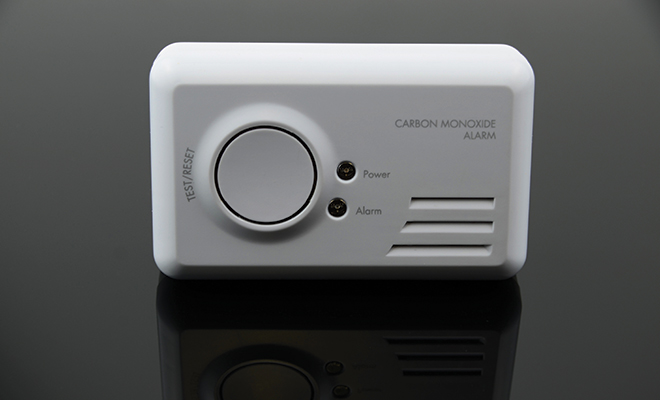
Making Your Home Safe from Carbon Monoxide
“Your wedding day will come and go, but may your love forever grow” is merely one saying reminding newlyweds that life after the wedding day is just as important to prepare for. Planning for the future beyond being a homeowner should also include safety in the home.
One of the most important safety planning pieces in a newlywed’s home is the prevention of carbon monoxide poisoning. It is entirely preventable; every homeowner needs to recognize the risks.
Carbon monoxide is often described as the silent killer. It is an odorless and colorless gas that is produced when fuels such as gasoline, coal, natural gas, wood, oil, propane and methane burn incompletely. Typically, in the home, the heating and cooking equipment that burn fuel, such as the kitchen appliances and the furnace, are the biggest potential sources of carbon monoxide. Another source of dangerous carbon monoxide levels could include a vehicle or generator in an attached garage.
What causes carbon monoxide?
Carbon monoxide production occurs in the home when gas or oil appliances are working improperly. When appliances and vents work correctly and there is enough fresh air in the home, complete combustion can occur, which is good. These common conditions produce trace amounts of carbon monoxide but these are usually not dangerous.
What are the dangers of carbon monoxide?
Because of the way the human body reacts to carbon monoxide, it is a deadly gas that causes poisoning. Carbon monoxide, or CO, robs blood of oxygen, so when it’s inhaled, the CO bonds with the hemoglobin in the blood, displacing life-giving oxygen. When this occurs, it generates carboxyhemoglobin, which is the source of carbon monoxide poisoning. A living being can be poisoned by a large amount of CO over a short length of time or by a small amount of CO over a longer period of time. Carbon monoxide poisoning can cause brain damage and death. The staggering statistics about CO poisoning make it clear that it’s important to pay attention and be proactive when becoming a newlywed homeowner.
Statistics
Four hundred fifty people die in the U.S. due to accidental carbon monoxide poisoning and another 50,000 become ill and visit the emergency department each year, according to the Centers for Disease Control and Prevention. U.S. fire departments in 2010 reportedly responded to 80,100 CO, non-fire incidents where CO was found. This statistic is an average of nine calls per hour, a 96 percent increase from incidents reported seven years earlier. That’s most likely due to the increased use of CO detectors.
How to recognize CO poisoning
Symptoms that are most common include dizziness, headache, weakness, nausea, vomiting, chest pain and confusion. Sleeping people or those who have been drinking alcohol can die from CO poisoning before recognizing symptoms. Pregnant women, infants and those with a condition such as asthma or emphysema that limits their body’s ability to use oxygen are particularly at risk.
Carbon monoxide poisoning is entirely preventable. As newlywed homeowners, you can protect your family by learning the symptoms and following basic home safety tips. ■
Sources: cdc.gov, firstalertstore.com, nfpa.org and theknot.com.
Safety Tips
To be a proactive and safe homeowner, install a CO detector. This device will sound an alarm to alert individuals of excessive CO levels inside the home. Here are some safety tips for detectors.
• Purchase a CO detector that has the label of a recognized testing laboratory. Follow the manufacturer’s instructions for placement and mounting height.
• Install a centrally located detector on each level of the home, outside each sleeping area and in locations where required by applicable laws, codes or standards. The best practice for safety would be to interconnect all detectors throughout the house so when one sounds, they all alert. Test the detector once a month. Set a calendar reminder to replace the detector according to the manufacturer’s instructions.
• Call the local fire department’s non-emergency number to find out who exactly to call if the CO alarm sounds. If the alarm goes off, evacuate immediately and move to a fresh air location outdoors. Call for help from the fresh air location and stay there until emergency professionals arrive.
• Have heating systems, water heaters and any other gas, coal or oil-burning appliances serviced by a licensed technician every year. Keep vents and flues free of debris that can block important ventilation. After a snowstorm, check that the vents for the dryer, furnace, stove and fireplace are clear of snow buildup.
• A generator that burns fossil fuel should be used in a well-ventilated location outdoors, away from vent openings. Never leave the motor running in a vehicle parked in an enclosed space such as a garage.
• If CO poisoning is suspected, call 911 immediately.







